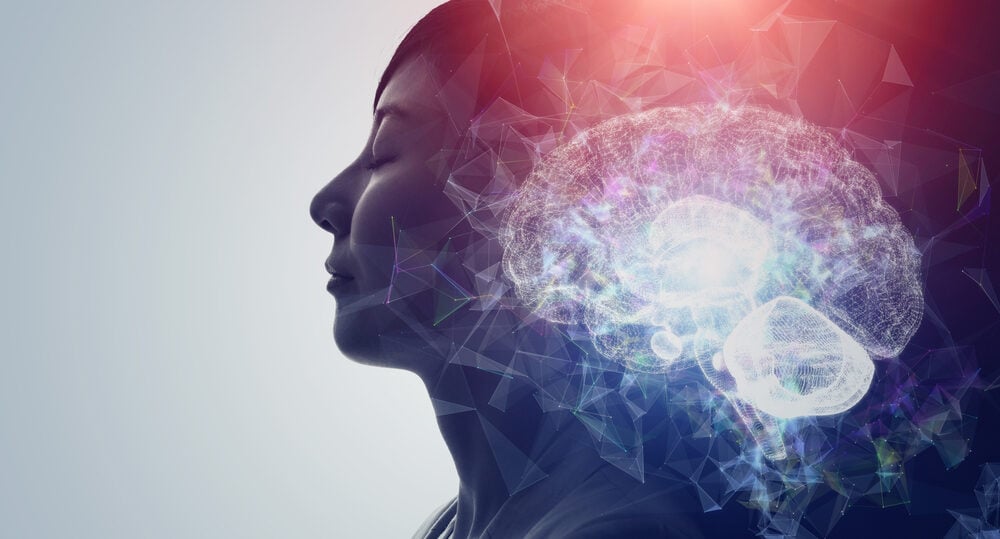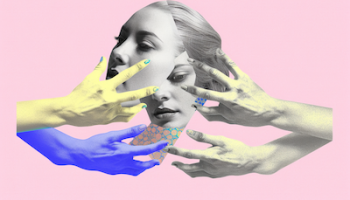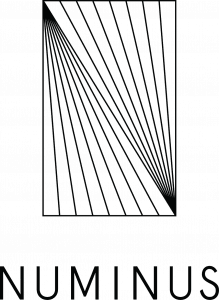
Welcome to the first installment in our three-part series on ketamine therapy, sponsored by Numinus, an official partner of Third Wave.
People with major depressive disorder (MDD) who do not satisfactorily respond to a course of recommended antidepressant medication within a specific amount of time are said to have a condition known as treatment-resistant depression. In hopes of changing the reality of those suffering from this condition, ketamine might be the next promising drug people should know about.
Depression is an increasingly common mental health condition, drawing the attention of many health agencies. The World Health Organization estimates that about 280 million people worldwide suffer from it. Unfortunately, while there are many well-established approaches to treating depression, most fail to bring lasting healing because they don’t address root causes. Moreover, in the case of the most common antidepressants, known as SSRIs, the medications sometimes have little to no effect on some individuals and a range of side effects in others.
SSRIs’ mechanism of action is generally similar from one medication to another. They usually work by increasing the availability of serotonin and norepinephrine, two neurotransmitters that are believed to be out of balance in depressed patients. However, recent research has shown that the causes of depression are not simply explained as a serotonin imbalance in the brain. For example, depression is often trauma-related. So, while SSRIs may help treat symptoms, these serotonin regulators rarely cure them.
As the urgent need for more effective treatments grows, companies like Numinus, a Canadian enterprise, are looking into the potential of ketamine alongside psychotherapy for long-lasting improvement of the quality of life of patients with depression. Numinus’s approach is to pay careful, sensitive attention to every individual’s story while providing ketamine therapy preparation and integration.
In an interview for Pharmacy Times, psychiatrist Dr. Reid Robison from the Numinus team emphasized, “…we need interventions that aren’t just kind of band-aid approaches to treating symptoms, like numbing out the anxiety. We need to get underneath the hood of these complex, multifaceted illnesses. And if there is an underlying anxiety disorder, we need to go for that root cause. If there’s trauma contributing, we need to do some trauma healing. And these can be serious illnesses that require intensive treatment. On the positive side, even deeply ingrained patterns and behaviors can be unlearned. It just takes time. And, as ‘therapy accelerators,’ psychedelics become important tools in helping the individual see with a new perspective….”
Under Dr. Robison’s clinical leadership, Numinus aims to transform mental healthcare with evidence-based, ketamine-assisted psychotherapy.
What is ketamine?
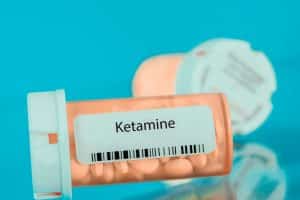
Ketamine is an FDA-approved anesthetic medication used as a single agent in diagnostic and surgical procedures in several countries due to its safety profile. The drug has been around for over 50 years and is commonly used to treat severe and chronic physical pain.
Unlike traditional antidepressants, ketamine works on a neurotransmitter in the brain called glutamate. This may contribute to a rapid antidepressant effect, this being one of the reasons why the drug is emerging as a new approach to treating depression.
Why is ketamine considered the new hope for depression?
A leading theory is that a decrease of glutamate released is the main mechanism of action of ketamine, stimulating neural development, synaptic plasticity, and brain-circuit repair. These changes could be beneficial for increasing the number of neural synapses essential for cognitive functions such as concentration, memory, learning, pleasure, and mood regulation.
So, while the most common antidepressants increase the brain’s supply of serotonin or other neurotransmitters, many researchers believe that ketamine appears to form new connections between neurotransmitters, making communication across additional synaptic pathways possible. As a result, for many patients, the treatment improves their quality of life, reduces the symptoms of depression, and amplifies the benefits of psychotherapy to address underlying causes.
When is ketamine an indicated treatment?
Ketamine could be an alternative treatment for patients who do not respond well to antidepressants and those with suicidal ideation or risk. Recent studies show that people with bipolar depression, post-traumatic stress disorder (PTSD), obsessive-compulsive disorder, (OCD), and generalized anxiety symptoms could also benefit from ketamine, although the evidence is not yet conclusive.
How does ketamine work in the treatment of depression?

Researchers believe that, in a patient with treatment-resistant depression, the brain areas responsible for emotional balance, learning, and memory present structural and functional abnormalities.
While antidepressants act on the nervous system, promoting the normalization of the flow of neurotransmitters, ketamine acts directly on the most prevalent chemical messenger in the brain, glutamate. Glutamate is crucial for the alterations that our experiences bring about in the synapses, which in turn underlie learning and memory.
Due to ketamine’s unique mechanism of action, many patients respond to treatment quickly, within hours. The recommendation for most patients is to have a series of ketamine treatment sessions in order to maximize response and duration of treatment effect.
What do different ketamine treatments look like?
Ketamine treatments come in a range of delivery methods. Some doctors prescribe Spravato (Esketamine), an FDA-approved nasal spray for treatment-resistant depression and Major Depressive Disorder (MDD) with Suicidal Ideation in adults. Medical professionals also administer off-label ketamine infusions and sublingual tablets for a range of mental health conditions with considerable success.
Nasal Spray / (Spravato)

Intranasal ketamine-type medications come in different variations. Patients can take Spravato at a doctor’s office. For two hours after the intake, doctors observe the patient for any side effects. Patients with treatment-resistant depression often receive Spravato twice weekly for one to four weeks, then once a week for weeks five to nine. After that, they may receive Spravato once every week or two.
As Spravato treatment is quite expensive, an alternative is to purchase ketamine nasal spray from a compounding pharmacy that customizes the spray to the patient’s needs, following a doctor’s prescription.
Lozenges

The oral consumption of ketamine lozenges happens at home or in a medical facility. Some doctors prescribe lozenges for at-home use, often to treat depression between ketamine infusions or intranasal courses. At times, doctors recommend lozenges as the main course of treatment.
IV (Intravenous) Ketamine
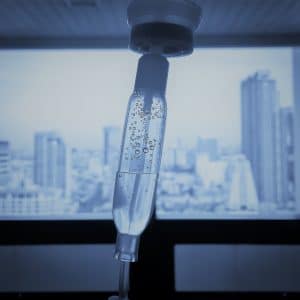
Intravenous or IV therapy is unquestionably the best-known, most common ketamine treatment option. This delivery method involves injecting ketamine, sometimes with lidocaine, magnesium, and/or other substances, into the bloodstream via a needle or catheter. One of infusion therapy’s main benefits is the ability to administer ketamine in a precise and time-limited way and to be able to stop the infusion if needed. The procedure lasts anywhere from 45 minutes to two hours and takes place in a room with a nurse practitioner.
Patients often quickly feel the positive outcomes of the session and in the days that follow, they may start to feel ketamine’s longer-term effects. There are generally four to six sessions, and patients experience more significant improvements over time. Many no longer feel depressed by the end of the protocol.
Unfortunately, a major obstacle to patients receiving IV ketamine treatments is the cost and challenges in obtaining full or partial insurance coverage in the US.
IM (Intramuscular) Ketamine
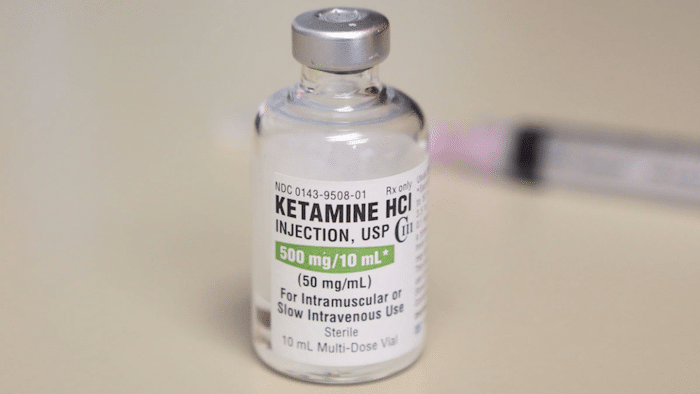
There are several ketamine infusion centers and pharmacies providing ketamine for depression, pain, and other disorders in the US, but not many approach the treatment through a more holistic lens. Numinus sees ketamine as a tool to assist patients’ psychotherapeutic process, allowing them to address psychological causes of depression. The treatment options available at Numinus clinics are lozenges, IM ketamine, and Spravato.
“Difficulties in emotion processing are often at the heart of many mental health struggles. And if we can support the clients in developing skills and confidence in moving towards their emotions, and leverage the power of the corrective experience, the healing power of caregivers, [and] supporting them with emotion coaching skills, then we’re wrapping the client in this really powerful therapeutic healing environment and leveraging ketamine as a catalyst,” says Dr. Robison, in an interview for the Psychedelics Today podcast.
Risks and Side Effects of Ketamine
While rare, ketamine’s main risks include cardiovascular conditions and abrupt psychotic symptoms. The psychiatrist or medical team must analyze each case individually for such potential problems. In the absence of those contraindications, there are no substantial dangers, and regulations and medical supervision are in place to ensure the patient’s safety.
What Comes Next?
It is hoped ketamine treatment will be expanded in the US, become more affordable, and be approved in other countries within the next few years. For that to happen, more open conversations around mental health and the use of psychedelics need to take place.
In the same interview for Pharmacy Times, Dr. Robison states, “There is still a stigma…and a bias that we do need to work hard to collectively reframe, both a stigma in mental health and access to treatment. It should be more a sign of strength to seek out help with your mental health, and not a sign of weakness.”
For more information about psychedelic-assisted therapy and finding a clinician near you, we recommend you visit the Numinus website.

